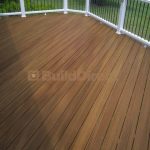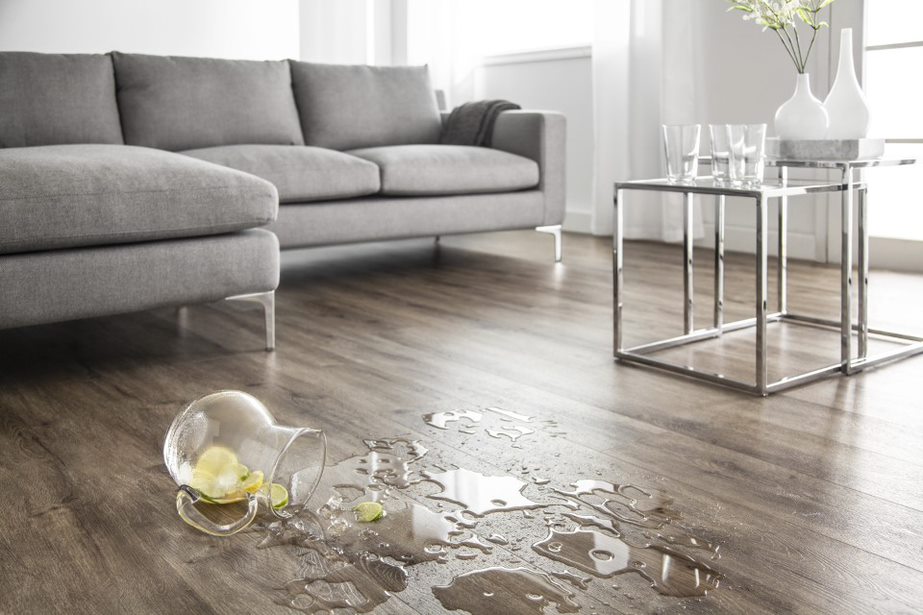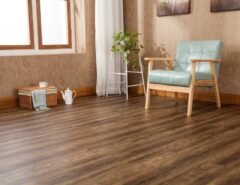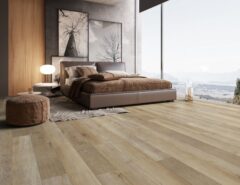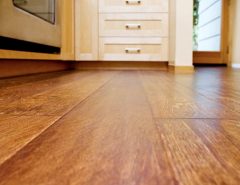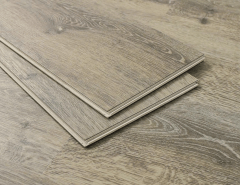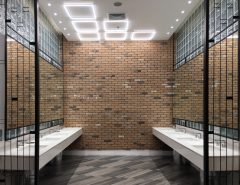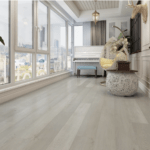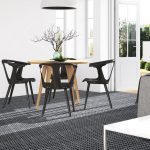Like many design fiends, I adore the look of hardwood floors. So much so, in fact, that I took my most recent home because of the rare-looking redwood they used when it was first built in the 1930s. But I have since learned a lesson that was painful, and it’s a pretty simple one: Hardwood is hard on some bodies.
Some folks have no problems, but other people don’t absorb shock well, and for them it can be a problem. There are workarounds and there are alternatives, so I’ll tell you what I’ve experienced, what I’ve learned, and how I’m being taught to adapt.
What’s the damage?
For me, I have immobile ankles that mean my body’s first shock-absorber is basically broken. Every step I take, therefore, registers. Not true for everyone, so please don’t think this is a “Hardwood is bad for you!” article — because it’s not. Recently-installed hardwood is very different from that of the era I’m contending with, the 1930s.
Today’s underlayment and lining offers more shock absorption and softer footing, but it’s still hardwood. If the floor has no give, then your body must, and if your body doesn’t, then Houston, we have a problem. These issues are a step below those suffered by people who walk on tile or concrete all day, but if it’s your home where you are the rest of the time, well, it’s worth considering all sides.
What are the symptoms?
If you’ve just installed hardwood or moved to a place with it, and you’re experiencing low-back issues, alignment issues, sore feet, aching knees, it could be your body’s not wowed by the sudden shift in flooring, or the subfloor underneath it. It can also do things like make your calves super-tight or put additional strain on your Achilles, which has ripple effects up the body.
The good news is, you’re not old, you’re just a responsive product of your shifting environment. And that’s not the end of the world, so you can relax. Really. Let’s talk about ways to soften your steps at home.
How can I mitigate things?

Giving your feet and back some relief. Yanchi Area Rugs – Shag Collection. Brick Shag / 2’3″x8′ Runner
You’ll need rugs, indoor shoes, and an awareness of what it feels like when you’re starting to get a little wonky. Gentle calf and other muscle stretches can offset the shocky blowback, but rugs with nice cushy underlays in heavy walking/standing areas will really help you put a dampener on the shocking experience of having such gorgeous floors. Don’t cheap out on underlays, because good ones are designed not just to prevent rug slippage but to save your body.
Put these in high-traffic areas, and you’ll be well on your way to a kinder/gentler balance. Considering how much people mock them, I know you might cringe, but my podiatrist gives a big thumbs-up to the shock absorption and comfort found in the much-maligned “Crocs” shoes. Absorbent footwear at home makes a big difference in how your body reacts with hardwood, especially on task-heavy days when you’re running around or standing a lot.

Cork flooring underlay. Cork is made up of air-filled cells that make it a great material for natural shock absorption. This is only one example of quality underlay designed to make a walking experience more comfortable on the 21st century hardwood floor, or any other floor.
Are there alternatives that aren’t carpet?
Funny you should ask! Cork does a body good, so much so that my podiatrist says he loves it in his home, especially in the bathroom. Cork is a lesser-used product but proven to stand the test of time, and you’ll find it in a lot of Californian bungalows from the mid-century. Cork flooring offers all the warm, natural colors of wood, but without the harsh treatment on your body. Cork actually feels soft to walk on. It has way more give. It doesn’t just absorb your footfalls so you don’t absorb shock, but it also soaks up sound and doesn’t get cold in the winter. Another plus is that cork is a truly renewable resource so it’s very environmentally friendly.

Cork flooring either as a primary floor covering or as a subfloor or underlay is naturally impact-resistant. Evora Cork – Porto Tile Collection from BuildDirect
Wood can still work
Hardwood floors, like cork, offer color tones and contrast that some homeowners think can’t be matched. We’ve worked with wood since the dawn of humanity, so we can have a pretty emotional connection to spaces that have a lot of it. It’s also a really great product for people with allergies and other environmental issues, because it’s somewhat easier to control the dust and cleanliness factor.
Some of today’s engineered hardwood can offer a softer touch for day-in, day-out life, but remember they’re talking about the “average person” impact, and let’s face it, some of us aren’t average. It can be expensive (and maybe even disappointing to some) to cover those gorgeous floors with rugs, but it’s often the best way to ensure your body works at its best with your home.
Like most challenges, knowing the cause is half the battle. Fortunately, this beautiful, timeless hardwood challenge has plenty of accessible, affordable solutions available in today’s marketplace.




